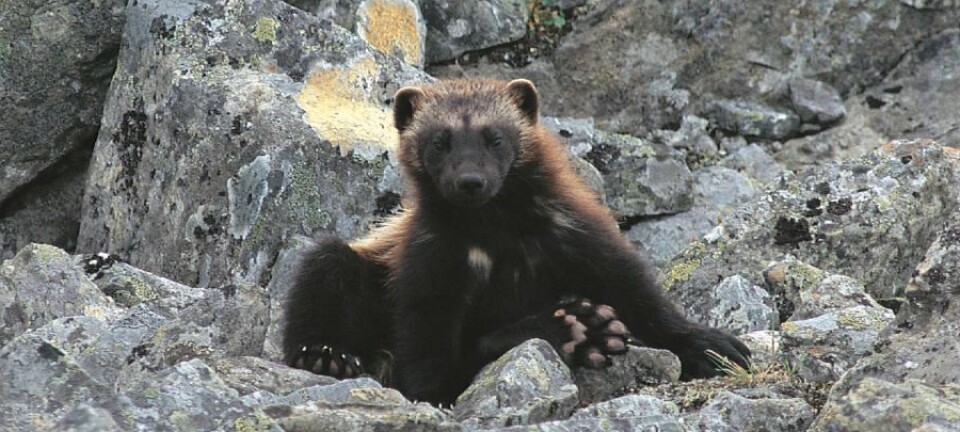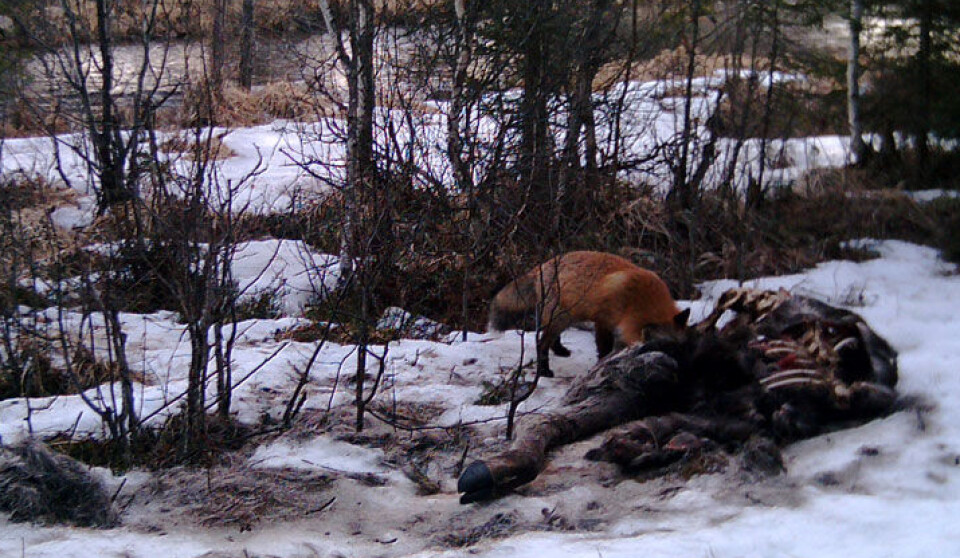
Some wolverines travel great distances during their lifetime
Researchers have managed to track where wolverines go after leaving their mothers.
Wolverines are mysterious animals that are not easy to spot.
They are quite shy and usually avoid areas with people.
This has made it challenging for researchers to determine where wolverines go once they leave their mothers and start living independently. However, a new method is providing many new answers.
Difficult to work with
“Wolverines are quite difficult to study because we rarely see them. We have a lot of knowledge about tracks, but it’s not easy to identify which individual they belong to and where they are headed,” says Jenny Mattisson.
She is a researcher at the Norwegian Institute for Natural Research (NINA).
Together with other researchers in Norway and Sweden, she is behind a new study that uses DNA technology to track wolverines.
By DNA testing wolverines, the researchers discovered who was related to whom and where in the country they were born. They then created a large family tree of wolverines in Scandinavia.
The researchers were able to determine where 700 wolverines were born and where they were when they had their first offspring.
It became clear that some wolverines travel over great distances before they settle down and have kits.
Need a lot of space
Wolverines do not share their living areas with others of the same sex, not even their own offspring. They are highly territorial.
“Females tend to stay in the area where they were born, near their mother. But they are very territorial. Therefore, there’s no overlap in their territories. No female lives in the same area as another female,” says Mattisson.
Most viewed
If there is no space in the area near the mother, the female has to move on.
On average, females move 55 kilometres from where they were born to where they have their own offspring, the new study shows.
Males travel farther
For males, the situation is different. To find a mate, they often have to travel long distances.
“They can’t mate with their relatives, so they must travel farther to find others, although there is some inbreeding among wolverines,” she says.
It can be difficult for young male wolverines to find areas where they can settle.
“The established adults are the strongest individuals. It’s difficult for a young wolverine to chase away an adult wolverine. When they get old, they can be driven away by other, younger wolverines,” says Mattisson.
On average, the males in the study migrated 94 kilometres from where they were born to a place with enough free space away from other rival males.
The wolverines that travelled the farthest
Some wolverines travel farther than others.
The female that travelled the farthest, according to the new study, travelled 632 kilometres from where she was born to where she had her own offspring.
The male that travelled the farthest was born in Norway and ended up in Sweden – a whole 696 kilometres away.
Can survive in most places
Wolverines can live almost anywhere, as long as there aren't many people or other wolverines around.
“Wolverines are very opportunistic. If they have food, they can thrive in many places, but they’re not very fond of people. We rarely see them near cities, but they’ve spread further into the forests,” she says.
Mattisson explains that wolverines have traditionally been seen as a species that thrives in the mountains, but they now live deep in the Swedish and Norwegian forests.
Wolverines had a better chance of surviving in the mountains when there was a lot of predator hunting in the country.
In 1845, it became a political goal to eradicate all large predators in Norway.
Allowed to shoot wolverines
The wolverine is both a scavenger and a predator. The fact that it preys on livestock, such as sheep and reindeer, can lead to conflicts.
“In Norway, it’s legal to shoot wolverines because of this conflict. Norway has a goal of maintaining 39 females with kits. Therefore, the wolverine is automatically classified as critically endangered,” she says.
In areas where the wolverine does not create conflict, it is more likely to be left in peace.
Mattisson says that since the population of wolverines in Norway is intentionally kept small, it is important to ensure that there is not too much inbreeding.
———
Translated by Alette Bjordal Gjellesvik
Read the Norwegian version of this article on forskning.no
Reference:
Mattisson et al. Spredningsmønster hos jerv i Skandinavia (Dispersal patterns in wolverine in Scandinavia), NINA Report 2471, 2024.





































